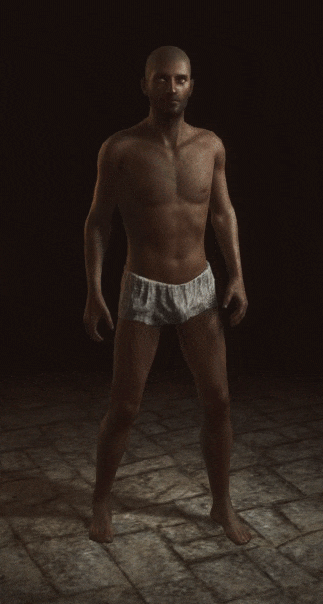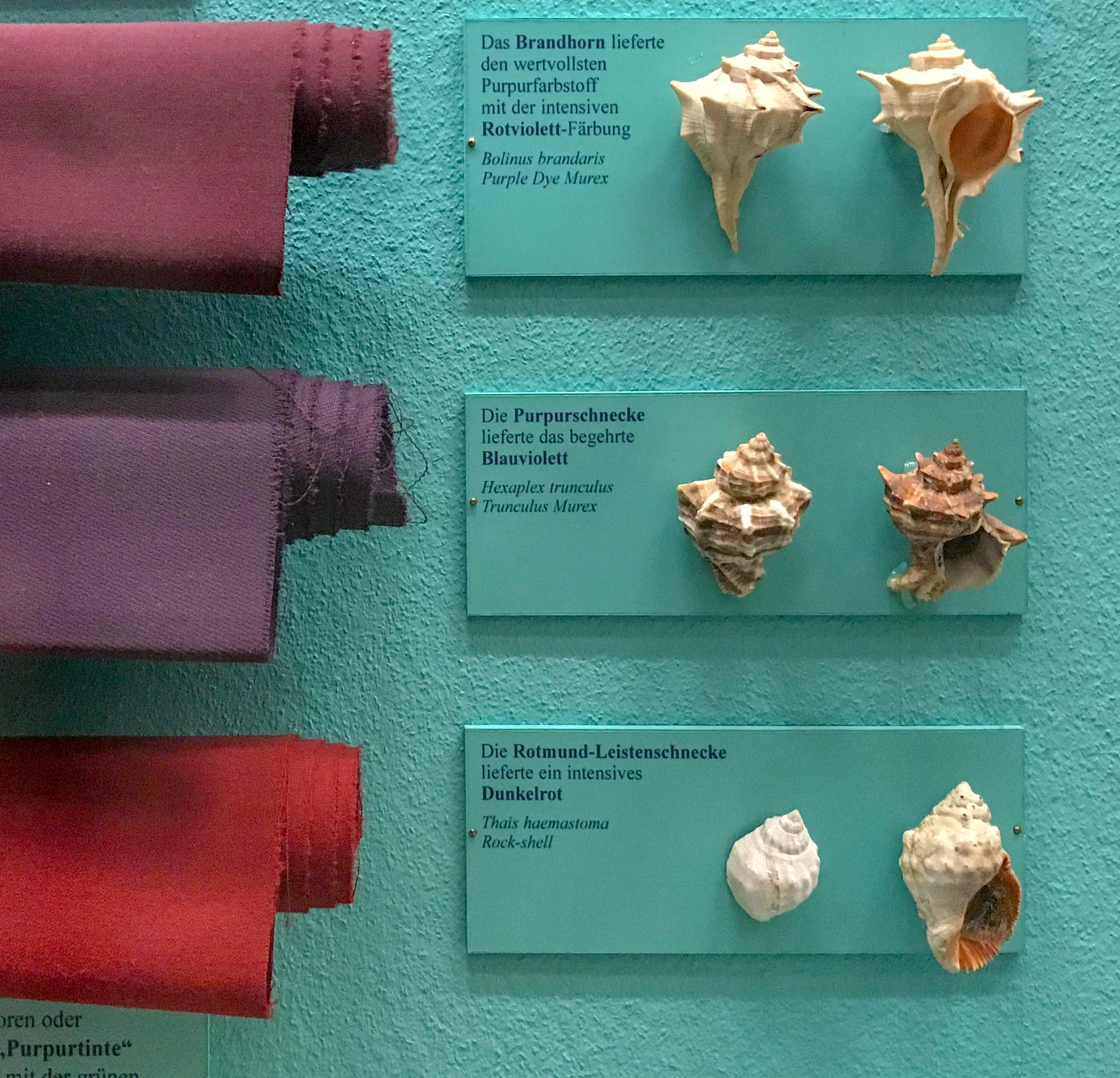The deep, rich purple dye made from this snail became known as
Tyrian Purple. The process of making the dye was long, difficult and expensive. Thousands of the tiny snails had to be found, their shells cracked, the snail removed. Mountains of empty shells have been found at the ancient sites of Sidon and Tyre. The snails were left to soak, then a tiny gland was removed and the juice extracted and put in a basin, which was placed in the sunlight. There, a remarkable transformation took place. In the sunlight the juice turned white, then yellow-green, then green, then violet, then a red which turned darker and darker. The process had to be stopped at exactly the right time to obtain the desired color, which could range from a bright crimson to a dark purple, the color of dried blood. Then either wool, linen or silk would be dyed. The exact hue varied between crimson and violet, but it was always rich, bright and lasting.
The actual color of Tyrian purple seems to have varied from a reddish to a bluish purple. The
murex shells coming from northern waters, produced a more bluish color than those of the south. The most valued shades were said to be those closer to the color of dried blood. The chemical composition of the dye from the murex is close to that of the dye from indigo, and indigo was sometimes used to make a counterfeit Tyrian purple, a crime which was severely punished. What seems to have mattered about Tyrian purple was not its color, but its luster, richness, its resistance to weather and light, and its high price.
In modern times, Tyrian purple has been recreated, at great expense. When the german chemist tried to recreate Tyrian purple in 2008, he needed twelve thousand mollusks to create 1.4 ounces of dye, enough to color a handkerchief. In the year 2000, a gram of Tyrian purple made from ten thousand mollusks according to the original formula cost two thousand euros.
















